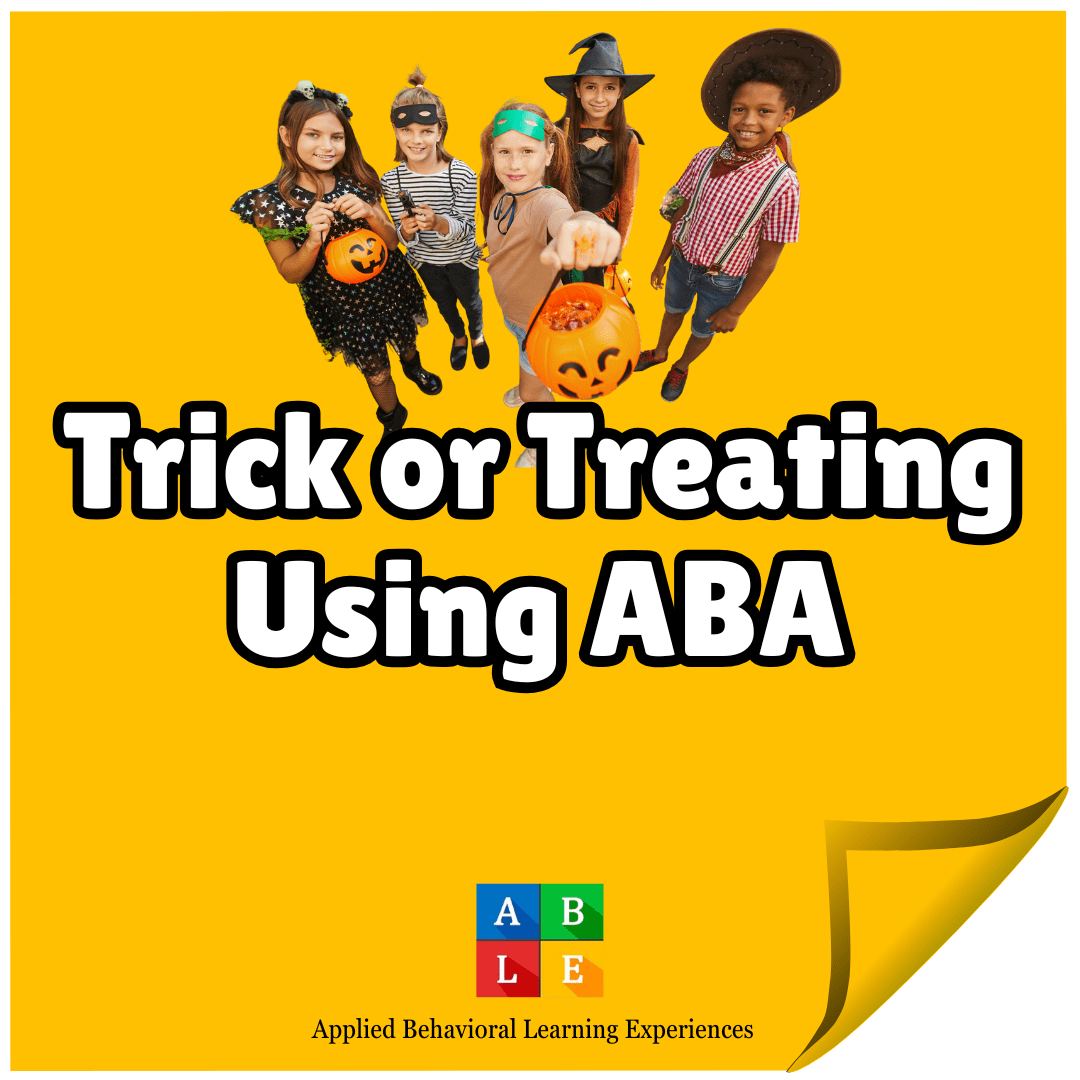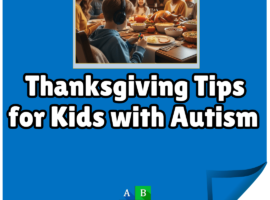5 ABA Tips for Turning Trick or Treating into a Positive and Successful Experience for Kids with Autism
At ABLE (Applied Behavioral Learning Experiences), we know that the excitement of Halloween can also bring unique challenges for children with autism. The changes in routine, unexpected sights and sounds (like elaborate costumes and loud doorbells), and crowded streets can be overwhelming.
The good news is that thanks to the approach of Applied Behavior Analysis (ABA) therapy, families can transform this spooky night into a fun, successful, and positive experience.
Here are 5 ABA-based strategies our BCBAs recommend to help your child enjoy a positive trick-or-treating experience this year:
1. Create a Visual and Written Schedule
The unknown is often the most anxiety-inducing part of an outing. ABA utilizes visual supports to provide predictability and structure.
- Actionable Tip: Before the big night, create a simple visual schedule that breaks down the entire process. Use pictures or text to show:
- Put on Costume
- Eat Dinner
- Go to First House
- Say “Trick-or-Treat”
- Walk to Next House (Repeat 5 times, for example)
- Go Home
- Look at Candy
By clearly setting expectations for the sequence of events, you are using a powerful antecedent strategy to reduce potential behavior challenges.
2. Practice and Desensitize (Pre-Exposure)
A sudden change in environment or the sight of a new person in a mask can trigger a fear or avoidance response. Systematic desensitization can help your child gradually tolerate these new stimuli.
- Actionable Tip: Don’t wait until Halloween night to use the costume. Have your child wear pieces of their costume for short periods leading up to the holiday, and slowly increase the duration. You can also practice the steps of trick-or-treating:
- Practice knocking on your own door.
- Practice saying “trick-or-treat” and “thank you.”
- Watch videos of people in costumes and approaching doors to build familiarity.
3. Use Powerful Positive Reinforcement
In ABA, we increase desired behaviors by rewarding them. For trick-or-treating, the candy is a natural reinforcer, but you should also reinforce the desired behavior of participating appropriately.
- Actionable Tip: Clearly define what behavior earns the candy (the reinforcer). Is it walking nicely? Saying the target phrase? Waiting patiently? Use an immediate reinforcer (a small piece of preferred candy, a favorite toy, or praise) immediately after the target behavior occurs at each house. For example, if your child successfully says “trick-or-treat,” offer enthusiastic praise and a small, high-value reinforcer right away.
4. Set a Clear Ending Boundary (The “First/Then” Rule)
Transitioning from a highly exciting activity (trick-or-treating) back to a calmer routine (home) is often the most difficult transition. Setting an accessible end goal can reduce frustration.
- Actionable Tip: Use a clear, concrete rule to signal the end of the activity. This could be a time-based rule (“We will walk for 30 minutes, then go home”) or a house-count rule (“We will stop after 10 houses”). State the boundary using a “First/Then” statement: “First, we walk to 10 houses and get candy, then we go home to sort your candy.” Use a timer or a counter (like a stack of picture cards representing houses) to help your child visually track their progress toward the end goal.
5. Prepare a Sensory Survival Kit
While ABA focuses on skill-building, supporting sensory needs ensures your child is regulated and ready to learn and participate.
- Actionable Tip: Pack a small backpack with items that help your child self-regulate:
- Noise-canceling headphones for loud groups or doorbells.
- Fidget toys for waiting in line.
- A comfort item (like a weighted blanket or favorite stuffed animal) to manage anxiety in the car or upon returning home.
- A bottle of water to help stay hydrated.
By planning with these ABA strategies, you are setting your child up for a night of happy memories and skill development.
Supporting Families with ABA Therapy in Central Florida
At ABLE, we are dedicated to providing comprehensive and compassionate care to help every child thrive in all environments. If you are seeking high-quality support for your family, we are proud to offer ABA therapy in Tampa and Brandon for kids with autism accepting most insurances with Spanish Speaking Team. Contact us today to learn how ABLE can support your child’s journey!
Looking for ABA therapy in Tampa or Brandon before the year ends? We have availability and spots available without a waiting list. Call us at (863) 619-2809 or Email us at intake@applied-behavioral.com and start your child journey to growth today!






There are no comments